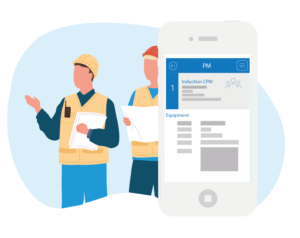Maximizing profits with an effective multifamily operating expense ratio strategy
Did you know that multifamily operating expenses can consume up to 50% of your property’s income? Managing these costs is crucial for boosting profitability in your multifamily investments.
In this blog, we’ll explore how understanding and optimizing your operating expense ratio (OER) can make a significant impact on your bottom line. We’ll dive into common expense categories and share strategies to help you lower your OER. You’ll also discover how MRI Software’s tools can streamline these efforts, making your property more profitable.
What are multifamily operating expenses?
Multifamily operating expenses are the regular costs that come with running and maintaining a rental property. These can range from maintenance and repairs to utilities, insurance, and payroll.
Multifamily operating expenses per unit
One way to keep track of your expenses is by looking at the cost per unit. This helps you see exactly where your money is going for each rental unit and figure out if there’s room to cut costs. Comparing your expenses to the average multifamily operating expenses can also help you determine if your property is operating efficiently or if there are areas where you might be overspending.
Types of operating expenses for multifamily properties
Knowing where your money goes is the first step in making smarter financial decisions. Understanding the categories of operating expenses in multifamily properties helps in budgeting, forecasting, and managing expenses effectively.
Maintenance and repairs
Keeping your property in good shape is crucial, and that means regular maintenance. This includes tasks like plumbing, electrical work, landscaping, and interior repairs. Addressing these issues proactively helps prevent more expensive emergency repairs down the line.
Utilities and insurance
These are non-negotiable costs that ensure your property runs smoothly and stays protected. Utilities cover water, electricity, gas, and waste management—everything your tenants need for comfortable living. Insurance provides protection against risks such as property damage and liability claims.
The role of the operating expense ratio in multifamily properties
Your operating expense ratio (OER) is a critical metric that shows how much of your income is going toward operating costs. A lower OER means more of your income stays in your pocket. Using property management and financials software can make tracking and optimizing this ratio much easier, ensuring your property remains profitable.
What is multifamily expense ratio?
The multifamily expense ratio is a handy metric that helps you see how much of your income is going toward running your property. Essentially, it tells you what percentage of your rental income is being spent on things like maintenance, utilities, insurance, and other day-to-day costs. If your expense ratio is low, it means you’re doing a great job keeping costs down, so more of your income stays in your pocket.
But if the ratio is high, it might be a sign that you’re spending too much on operating costs, which can eat into your profits. Keeping an eye on this number regularly is key because it helps you spot areas where you can cut costs or boost income. A well-managed operating expense ratio multifamily not only keeps your property profitable but also makes it more appealing to potential investors or buyers.
How are multifamily expense ratios calculated? What they indicate about a property’s financial health
Calculating your OER is simple and straightforward. Use the following formula: Operating Expense Ratio = Total Operating Expenses / Gross Operating Income. A lower ratio indicates that your property is more efficient, giving you more profit at the end of the day.
Strategies to optimize your multifamily OPEX ratio
Want to keep more of your income? Here are some strategies to help you reduce your OPEX, or operating expenses, without cutting corners. Implementing these can make a significant difference in your property’s financial performance.
- Preventive maintenance: Regular checks and small repairs now can save you from big, costly fixes later. Addressing potential issues early reduces the need for expensive emergency repairs. Proactive maintenance keeps your property in top shape while lowering costs.
- Energy efficiency: Simple upgrades like LED lights or smart thermostats can lower your utility bills while keeping tenants happy. These changes not only save money but also enhance your property’s appeal. Energy-efficient properties attract eco-conscious tenants, which is a growing market.
- Vendor management: Shop around and negotiate to get the best deals on services and supplies. Building strong relationships with reliable vendors can lead to better rates over time. Effective vendor management is key to maintaining quality while controlling costs.
Managing your OER more efficiently with MRI Software
MRI Software’s multifamily property management tools are designed to make your life easier. From automating rent collection to tracking maintenance requests, MRI’s software can help you keep your operating expenses in check. By streamlining these processes, you’ll save time, reduce errors, and maintain a healthy OER—so more of your income goes straight to your bottom line.
Multifamily software used by the top ten NMHC managers
Take full control of the lead-to-lease process

Multifamily Tour Path Inspection Guide
Showing off your multifamily property is one of your first and best opportunities to “wow” prospective residents. As such, completing a tour path inspection is essential to a successful leasing experience. MRI Living is here to help you p…

